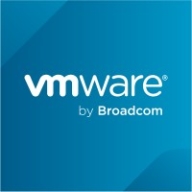

Informatica PowerExchange and Spring Cloud Data Flow compete in the data integration and management space. Based on feature strengths, Spring Cloud Data Flow appears to have the upper hand due to its ease of microservice orchestration and cloud integration.
Features: Informatica PowerExchange excels in robust data transformation and connectivity, ideal for integrating various data sources like DBMS and RDBMS. Its native real-time capabilities with built-in replication engine make it stable. It offers push down optimization for efficient processing. Spring Cloud Data Flow is noted for orchestrating microservices and real-time streaming integration with ease. It integrates well with cloud platforms and offers a simple programming model. Its auto-configuration and plug-and-play model simplify complex workflows.
Room for Improvement: Informatica PowerExchange could improve integration with other tools, enhance user-friendliness, and offer better pricing strategies. High availability and failover capabilities need attention. The installation is cumbersome. Spring Cloud Data Flow should enhance its user interface and provide more robust community support. Better documentation and support for complex configurations are needed.
Ease of Deployment and Customer Service: Informatica PowerExchange offers versatile deployment options including on-premises and hybrid cloud setups, though technical support can be slow. Spring Cloud Data Flow provides similar deployment options but faces challenges with support effectiveness and responsiveness.
Pricing and ROI: Informatica PowerExchange is seen as expensive, with costs rising with capacity needs, but offers substantial ROI through streamlined processes. Spring Cloud Data Flow is open-source, allowing free use, though extended support incurs fees. Its community edition is considered a good value.
| Product | Market Share (%) |
|---|---|
| Informatica PowerExchange | 1.2% |
| Spring Cloud Data Flow | 1.2% |
| Other | 97.6% |


| Company Size | Count |
|---|---|
| Small Business | 8 |
| Midsize Enterprise | 3 |
| Large Enterprise | 12 |
| Company Size | Count |
|---|---|
| Small Business | 3 |
| Midsize Enterprise | 1 |
| Large Enterprise | 5 |
Informatica PowerExchange Connectors provides high performance, out-of-the-box connectivity without having to develop custom data access programs.
Spring Cloud Data Flow is a toolkit for building data integration and real-time data processing pipelines.
Pipelines consist of Spring Boot apps, built using the Spring Cloud Stream or Spring Cloud Task microservice frameworks. This makes Spring Cloud Data Flow suitable for a range of data processing use cases, from import/export to event streaming and predictive analytics. Use Spring Cloud Data Flow to connect your Enterprise to the Internet of Anything—mobile devices, sensors, wearables, automobiles, and more.
We monitor all Data Integration reviews to prevent fraudulent reviews and keep review quality high. We do not post reviews by company employees or direct competitors. We validate each review for authenticity via cross-reference with LinkedIn, and personal follow-up with the reviewer when necessary.